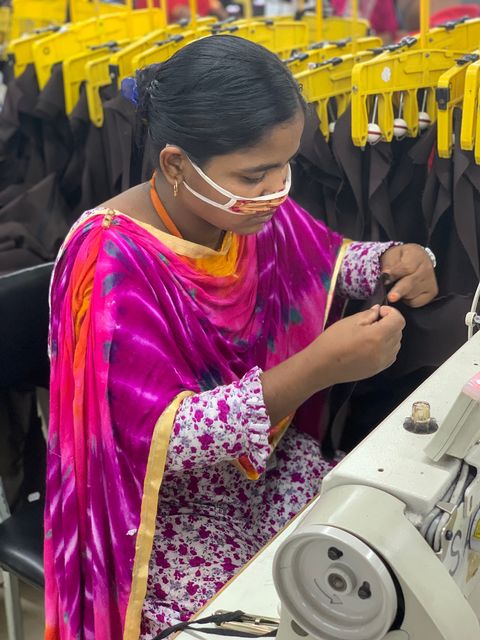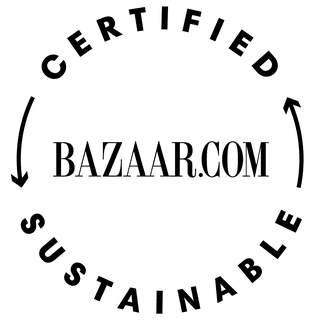How to Decipher “Sustainable Fashion” in 2020 – HarpersBAZAAR.com

Welcome to Sustainable Style, a new series in partnership with the New Standard Institute, where we’ll be publishing stories devoted to the fashion and beauty industry’s effects on the environment. Click through for lessons on how to shop sustainably, explorations on what the future of your closet really looks like, and plenty of myth-busting along the way.
Does this holiday season feel different? The world feels a little bit like it’s caving in on itself, no? In the past, this time of year would be all about fun parties and excitement about resolutions. This New Year, and looking at the decade ahead, feels uncomfortable and scary.
There are wildfires raging in California, Russia, Brazil, and Australia (did you see those heart-wrenching pictures of the burned koalas?), which make the latest reports coming out about the climate crisis becoming dangerously close to irreversible change all the more terrifying. Meanwhile, the country has never been more divided in modern history (not to mention the strikes taking place around the world), as issues that roiled below the surface for decades around gender, race, income inequality, education, medical and housing costs explode to the surface.
We’re not presented with many options when it comes to dealing with these headlines. We’re told to recycle (only to be told that it’s useless because much of that is going to landfill, anyway), vote when the time comes, use public transport when we can, and shop “sustainably”.
But when it comes to fashion sustainability, we are sent massively mixed signals. Does it mean local production, emerging designers, rented clothes, organic cotton, or clothing made from recycled bottles? It all seems overwhelming, and besides, what impact can we really have as just one person?

MAXINE BÉDAT
It is from this frustration and wanting to turn fear into action that colleagues and I came together to create the New Standard Institute, bringing leading scientists together to cut through the marketing noise to develop a meaningful, data-lead roadmap on turning an industry we love—fashion—into one that is in line with the environmental and social limits of our planet. Using this one central, culture defining, consumer-facing industry, we hope to set the tone for fashion and other industries on a path forward.
In the past year, in addition to pouring over all of the available research, I have followed the life of our clothes, from the cotton fields of Texas, to the yarn and fabric mills of China, to the cut and sew factories of Bangladesh and Sri Lanka, all the way to the second hand markets (and landfills) in Ghana, where much of our clothing ends up when we donate it.
We will be sharing more about this exploration and available research in the year to come, but we wanted to share with you the most critical insights and the resoundingly good news. (And my goodness, do we need good news). Below are the key takeaways.

Maxine Bédat
1) Climate Change
Fashion contributes over 8 percent of all greenhouse gases and, if things continue as is, by 2050 more than 25 percent of the entire global carbon budget will go to this one industry.
The carbon hotspot is at the mills (the places that spin the fiber into yarn and weave that yarn into fabric). More than 75 percent of the carbon footprint in the entire lifecycle of our clothing takes place there. To make things super clear, a company is only doing “sustainability” if they are lowering the carbon footprint of their mills. Doing this isn’t rocket science; it’s a matter of bringing in consultants to make the mills more energy efficient and changing the energy supply to renewables (and away from sources like coal). Levi’s is one of the very few companies making a serious commitment to do this type of work.

Maxine Bédat
2) Labor + Women’s Rights
In all of our interviews with workers and the studies that we have read in the space, the issue workers care most about is wages. Garment workers—the large majority of whom are women—for a variety of reasons, are some of the least paid laborers in the world.
The apparel industry is itself a hotspot for modern day slavery and child labor, according to the U.S. Department of Labor. Devastatingly, it is also repeatedly responsible for garment worker deaths from unsafe conditions, including 40 workers this month in Delhi, India. In order for fashion to address this issue, fashion companies must start measuring and reporting how much workers in their supply chain are being paid. Again, this is not rocket science, and surprisingly, not enormously expensive to implement. A report from Oxfam found that if brands absorb the cost of paying living wages within their supply chains, it would cost them less than one percent of the price of a garment.

Maxine Bédat
3) We Can’t Shop Our Way to Sustainability
From all of our research, this is the part that feels the most like the matrix. We’ve been told that shopping is the way to express our citizenship, to make the world—and the economy—a better place. As the climate crisis has come to the forefront, companies have responded by creating yet another product that we can buy. They call these products sustainable fashion. But this “sustainable fashion” still has an enormous environmental and social footprint and most of it is not actually addressing the two central issues above.
But we can change that, and this is where the real power lies. Fashion is a consumer-facing industry, and in this, consumers have real power—power to be vocal about their expectations. This is why we are rolling out a global call to action, which we ask that you join, here. It demands brands align their environmental goals with science and data and be transparent in this process. It is the only way to address these environmental and social crisis once and for all, because companies listen to what we, consumers, demand. You actually can play a crucial role in cleaning up this $2.5 trillion industry.
The origin of the word “emergency” is to bring to light, to emerge. By bringing to light the problems we also show the direction that leads us to the solution. During these tumultuous, existential times, that is something I can get excited about.
Here’s to a 2020 ahead that shows clarity, calm, and a path forward. You can join us on social media @NSIFashion2030.
Let’s block ads! (Why?)

